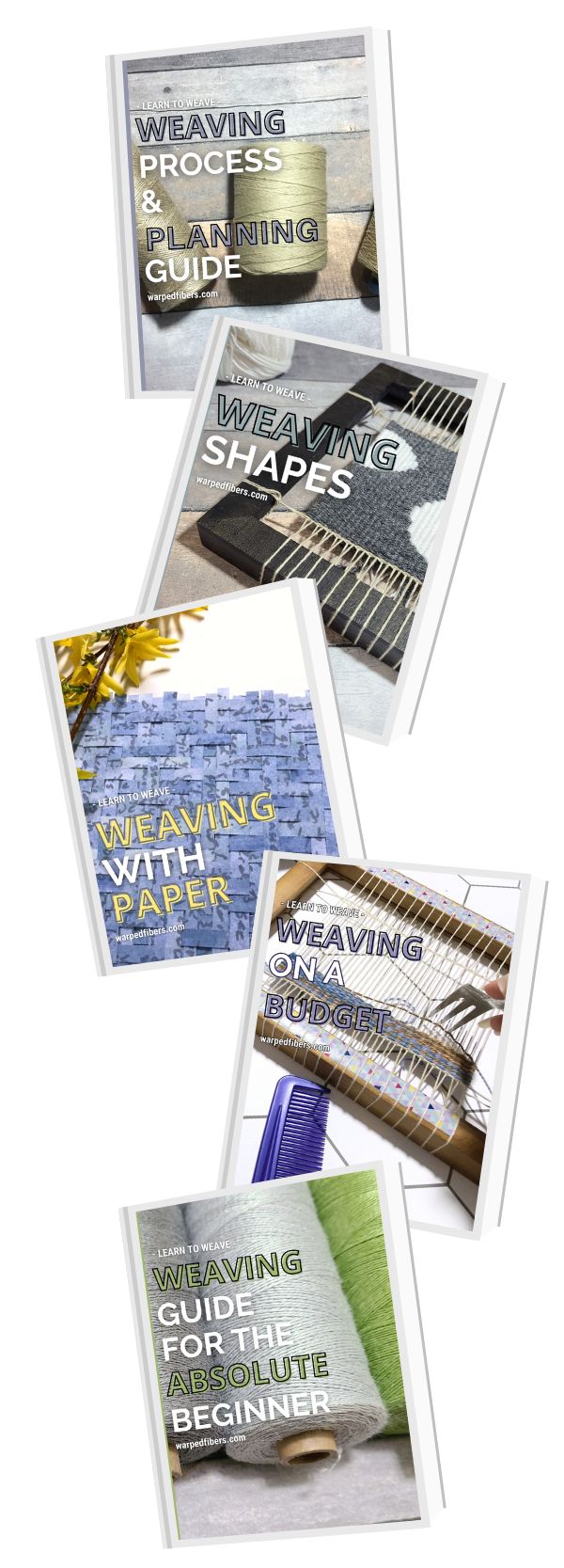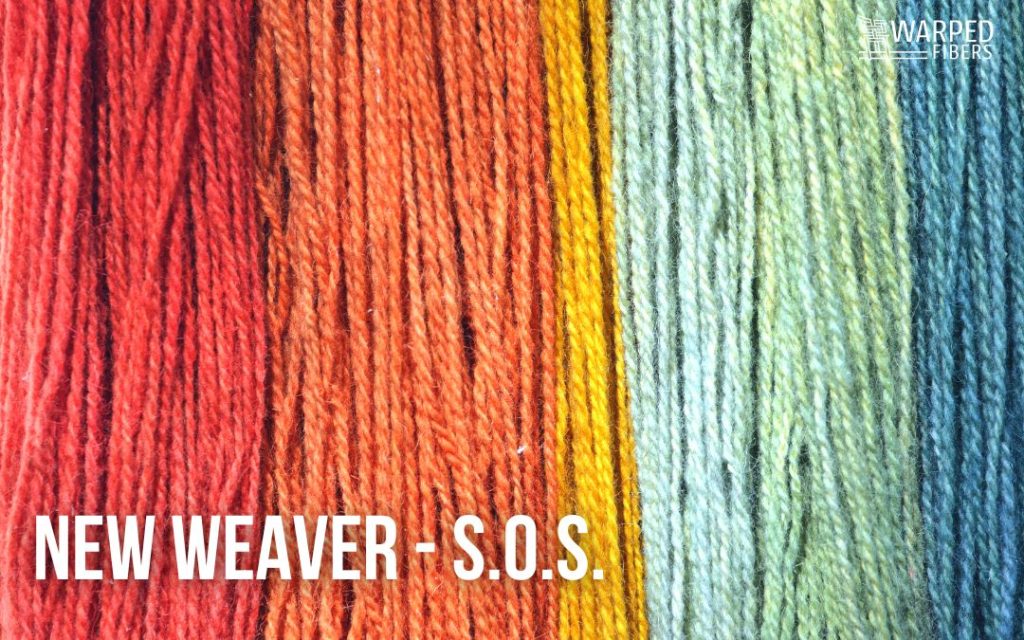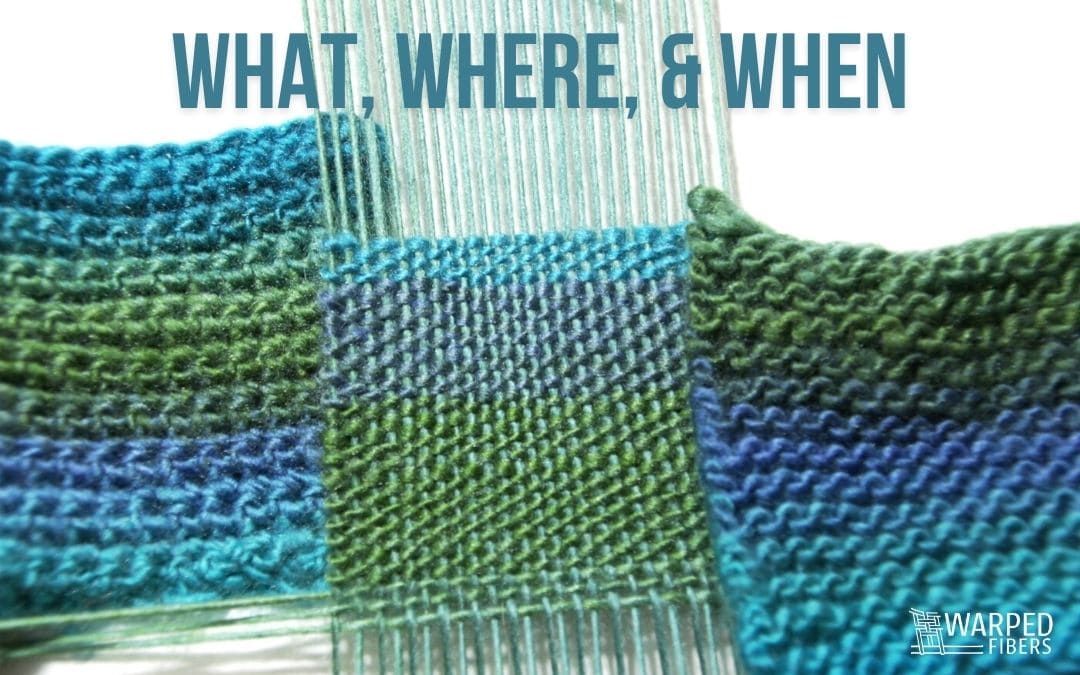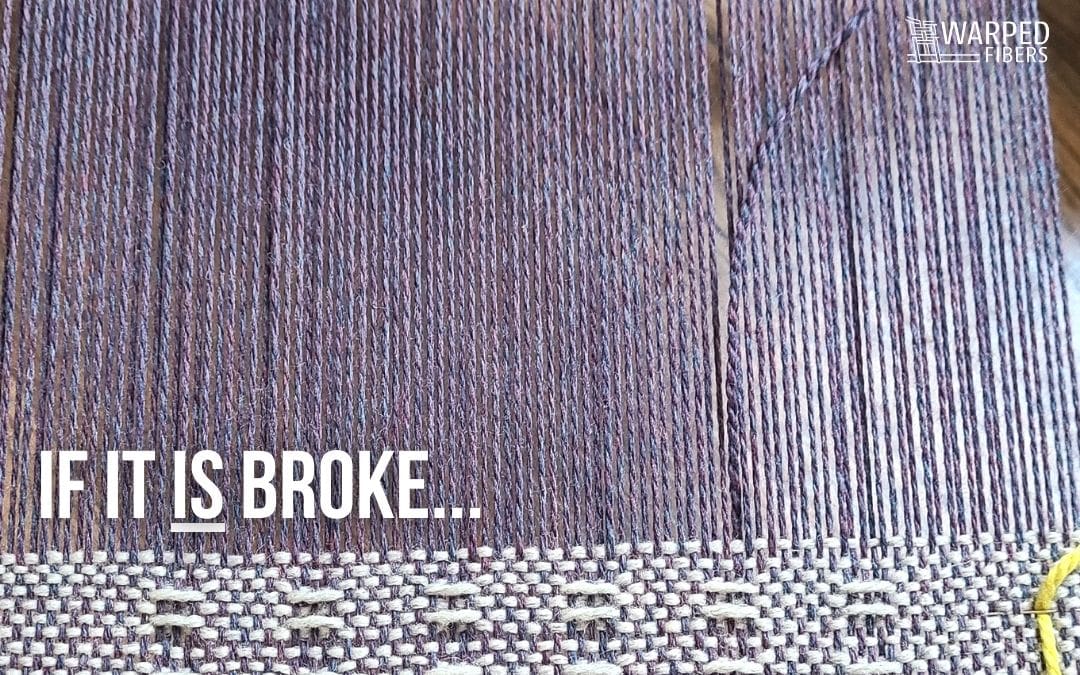Have you ever heard of pile weaving?
Even if you never noticed, you probably come in contact with pile weaving every single day! (To be fair, you usually will come in contact with at least one type of weaving every day – it is everywhere!)
But the pile weave I am talking about is carpet.
You know, that flooring option that a lot of people hate and replace with hardwood floors? Yep, carpet is a type of pile weave.
Similarly, pile weave can also be found in a lot of rugs, terrycloth (towels), and corduroy.
This page may contain affiliate links. If you purchase something through these links then I will receive a small commission – at no extra cost to you! Please read our DISCLAIMER for more info. Thanks for the support!
So what exactly is it?
Pile weave is a generic term for a style of weaving that has a three-dimensional texture on its surface. There are many different types of pile weave, but two common techniques are rya knots and looped pile.
A pile can be either cut or looped, depending on what you are going for. If you have ever purchased a high-quality rug you may have seen these terms before.
Beyond just the “pile” or the three-dimensional pieces – a pile weave contains another very important component. In order to maintain the integrity of the fabric, most pile woven textiles also contain a ground weft.
If you read through my overshot weaving post then you may already be familiar with ground weft!
Just in case you have not looked through it yet, a ground weft is a plain weave (tabby) weft that is woven between the pile weft in order to create a stable fabric.
Traditional Persian rugs
If you have ever shopped for a throw rug for your home, then you have probably come across Persian rugs… and their price tag.
Persian rugs are usually pretty expensive, and for very good reason. They are all hand knotted. Plus they are made with silk and wool with no synthetic fibers in sight.
Rugs have been woven in Iran since at least 2,500 years ago! They were originally made and used out of necessity for protection against the harsh environment, but due to their intricacy and beauty, they were eventually seen as a symbol of wealth. Originally these Persian rugs used an asymmetrical knot called a Persian (Senneh) knot. But, after Persia (modern-day Iran) was conquered by a Turkish tribe the trajectory of the Persian rug was changed forever.
The Turkish tribe brought with them the Turkish (ghiordes/ rya) knot that is used in a lot of Persian rugs today.
Velvet
Another common pile fabric that you probably know about, but have never thought about is velvet.
Velvet is actually a warp pile weave and thus requires two separate warps to be wound on either separate beams or individual bobbins (shown below.) The other pile weaves discussed in this post are all weft pile.
If you ever have the chance to go to Venice, Italy, I HIGHLY recommend taking a tour of Tessitura Bevilacqua. Tessitura Bevilacqua is a historic weaving studio and school that specializes in velvets. You can walk through rows of 17th-century Jacquard looms that are still in use today!
During the tour you can also watch the weavers create this extraordinary fabric by weaving and cutting the pile weave.
Tessitura Bevilacqua has created velvets for many prominent organizations and people throughout history. Including the Kremlin and the Catholic Church.
If you are interested in weaving history then there really is not a better place to visit and walk through. When I toured the weaving studio, it really was one of the biggest highlights of my entire trip to Italy.
Rya (Turkish/ ghiordes) knots
The terms rya, ghiordes, and Turkish knots can all be used interchangeably.
Essentially, rya is a Scandinavian carpet created with Turkish knots and ghiordes is a Turkish rug made with Turkish knots. The terms rya and ghiordes have become synonyms for the type of symmetrical pile knot that is needed to create these rugs.
I most often use the term rya because that is what I was originally taught.
Rya knots are one of the simplest pile weaves that you can learn to weave! There are actually multiple ways to make rya knots, but the one that I use and teach the most is almost annoyingly easy to do.
What do I mean by that?
Rya knots are a very often requested technique that I get from students. It makes sense! The shag-like pile that they create is enticing and tactile. They are also often used to create long and flowing fringe at the bottom selvedge of your weaving.
Once I show students how to do it, it can be almost anti-climactic.
“That is it?”
Yep. That is all there is to it.
So let’s go over this super simple rya knot technique that you can use to weave all the tactile shag rugs that you want.
How to make rya knots
The most important thing that you need to know before making any type of pile weave is that you must start with plain weave.
If you were to just start your rya knots onto your warp without plain weave then it would fall off when you take it off the loom!
Ahh!
So always start with at least a full pass (left and right) of plain weave before starting. This is true even if you are using your rya as fringe. This is because your rya knots will be long enough to cover your full plain weave pass.
Rya is made my taking individual lengths of yarn and wrapping it around your warps. It is best to cut all your rya wefts at the same time to make sure they are the same size. You could also wrap your weft yarn around some cardboard that is the right length you want and then cut them off. This will make sure they are all the exact same size.
There are now 2 ways to take it – either purchase the whole course at once for a discount or “create your own” course by purchasing just the parts you want! Either way, get 10% off for being a member of the Warped Community!
Rya is worked around two warps at a time. Your rya weft will go over the top of the two warps with equal amounts of weft on each side.
Then bring the ends through the middle of your two warps.
Pull down and repeat!
See. I told you it was easy.
After your row of rya you would want to do another row of plain weave to make sure your weaving is very secure (this is your ground weft I mentioned at the beginning.)
You can mix it up by using more than one weft at a time per rya knot. Try using different colored yarns or just more of them for a fuller textile!
When you are finished you can trim down your rya knots so they are all the same size. Trimming them also gives your weaving a cleaner and fuller look.
Looped pile
Looped pile weaves create a fun bubbly-type texture on the surface of your weaving. (The blue yarn in the image above.) This simple looped pile technique does require one extra tool in order to make uniform loops.
I really like using a bamboo knitting needle because it is a really good thickness – not too thin and not too thick. They are also smooth and made for yarn so you do not have to worry about any snagging – your yarn will always pull off smoothly. This is the size that I used for the example:
Really, though, you can use anything that you can wrap yarn around that is the same diameter along its entire length. Dowel rods, straws, or pencils are all options that you can choose if you are looking for something around your house.
How to make looped pile
The first thing that you want to do is attach your pile weft yarn to your warp. You can do this by just weaving two warps and then weaving your tail back in. (If you do not know how to weave your tails in then make sure to check out THIS post.)
Hold your knitting needle or whatever you are using up to the warp. Your first loop is the most annoying because it is not yet secure, but don’t worry it does not last long.
With your weft on a tapestry needle bring it over your rod so that you are working on top of it. Find the next warp that you would normally go under and pull the weft under that warp.
Next, bring your weft back over the rod so that you are now working underneath it. Find the next under warp and pull your weft through.
Work your way across the rod until you get to the other selvedge.
You are almost done!
In order to secure your looped pile you will need to weave at least one pick of plain weave over top of it. After you go all the way across to the other selvedge you can pull out the rod and set it aside.
Beat down your pile and now you are ready for the next row (which is done exactly the same way!)
Experimenting with different types of yarns, pile lengths, and yarn amounts can lead to some really fun and interesting weavings. Plus pile weaves can be used anywhere in your weaving, not just at the end or all in one row. Consider creating areas of pile weave paired with areas of plain weave to really emphasize the textures you created.
I always love to notice different weaving structures out in the wild (outside the studio) and pile weaves are pretty much everywhere!
Let me know your favorite pile weave in the comments!
Resources
https://www.little-persia.com/rug-guides/rug-history
https://nazmiyalantiquerugs.com/scandinavian-rugs/
https://nazmiyalantiquerugs.com/turkish-ghiordes-rugs/
https://www.little-persia.com/rug-guides/country
⇣ Love It? Share It! ⇣
You May Also Like





























when i weave it is not square how to make it square?
If you need help keeping your selvedges from pulling in then I recommend checking out this post on weaving straighter sides!
Thank you I have been given a whole lot of rug yarn and plan to make a pile rug for my bedroom
You’re welcome! Happy to hear you have a plan for your yarn. If you are on instagram make sure to take me @cole.bun because I would love to see it!